Deadly Fiction versus Living Facts: Tackling the Covid-19 Information Virus
Deadly Fiction versus Living Facts: Tackling the Covid-19 Information Virus
Lubna Daraz, Bebe S. Chang, Sheila Bouseh
The COVID-19 pandemic has tragically claimed the lives of over 7 million people globally. This toll has been exacerbated by widespread suspicions information regarding the origins and transmission of the SARS-CoV-2 virus, leading to the proliferation of false beliefs and conspiracy theories. The dissemination of misinformation and disinformation (MIDI) has further fueled this phenomenon throughout the pandemic.
A significant contributing factor to the reliance on MIDI and the acceptance of conspiracy theories during this crisis is limited health literacy. Research indicates that low health literacy has not only contributed to the spread of MIDI but has also resulted in substantial increases in healthcare costs, amounting to billions of dollars.
—Misinformation and disinformation have been demonstrated to contribute to the loss of lives during the COVID-19 pandemic—
Health Literacy is defined as being “linked to literacy and entails people’s knowledge, motivation and competencies to access, understand, appraise, and apply health information to make judgments and take decisions in everyday life concerning healthcare, disease prevention, and health promotion to maintain or improve quality of life during the life course.” Low health literacy is considered a key source of economic inefficiency in the U.S. and other healthcare systems. It is estimated that inadequate health literacy adds $106 to $238 billion cost to the healthcare system representing 7–17% of all personal healthcare expenditures in the United States. In Canada, the cost of poor health literacy is also approximately $9 billion per year.
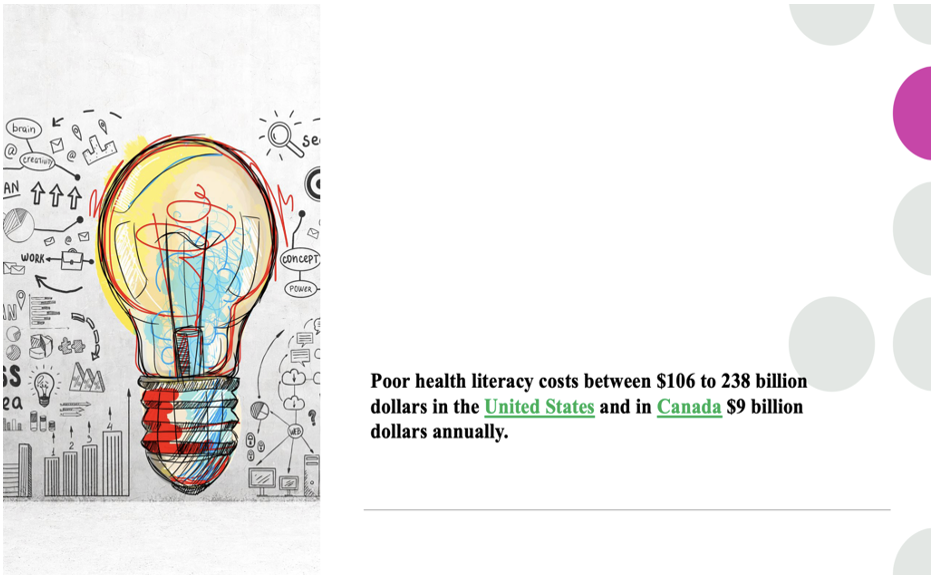
Social Media and False Information
The use of a proliferation of social media platforms since the early 2000s is being driven mostly by younger people. Unlike conventional media with its strict editorial (journalism) and production standards (non-journalism content), social media lacks robust gatekeeping mechanisms, making it susceptible to the proliferation of MIDI. This presents a significant challenge, as unchecked dissemination of false information can have detrimental effects on society as witnessed during the coronavirus pandemic.
To tackle this issue effectively, it is imperative to grasp the dynamics of Web 2.0—the era of interactive and collaborative online platforms. Understanding Web 2.0 principles is essential for ensuring the accessibility, user-friendliness, and integrity of health-related content on the internet to overcome the long-term impact of COVID-19. By embracing these principles, we can promote the dissemination of evidence-based information while mitigating the spread of MIDI. Additionally, fostering digital health literacy among users, particularly the younger generation, can empower them to critically evaluate online content and make informed decisions regarding their health and well-being.
The Rapid Evolution of Conspiracy Theories During the COVID-19 Pandemic
The proliferation of conspiracy theories during the COVID-19 pandemic caused widespread confusion among the public, leading many individuals to rely on these theories due to a lack of trustworthy sources of information. Seventy-six percent of 135 studies in a 2021 rapid systematic review demonstrated that social media was commonly used to access information relevant to COVID-19. The studies identified six prevalent conspiracy theories ranging from “#Filmyourhospital” to “The pharmaceutical industry created the coronavirus to increase sales of its drugs and vaccines.”
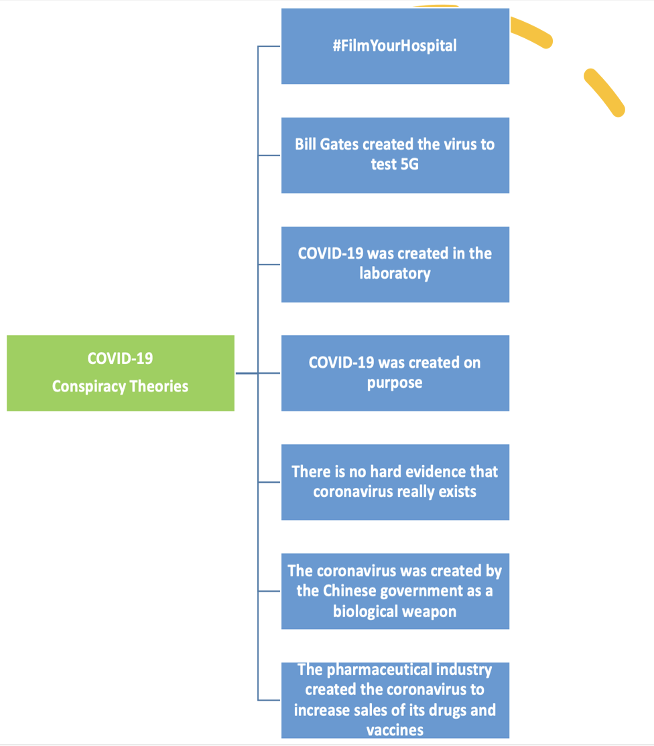
These theories were propagated by a variety of individuals, groups, and organizations across multiple platforms. Notably, influencers and opinion leaders played a significant role in disseminating MIDI through their endorsement of these conspiracy theories.
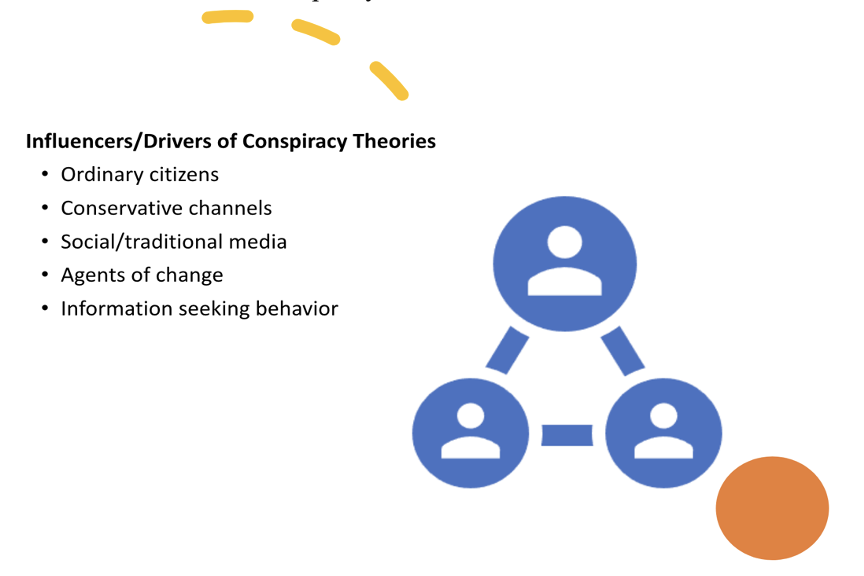
To comprehend the interconnected nature of MIDI and the dissemination of COVID-19 conspiracy theories, as discussed above, examining the role of Web 2.0 technologies is essential. Although these technologies facilitate the free exchange of information and knowledge, they can also serve as conduits for spreading rumors, disinformation, and conspiracy theories. Additionally, other modes of communication have frequently been utilized to propagate conspiracy theories, further amplifying their presence across various platforms.
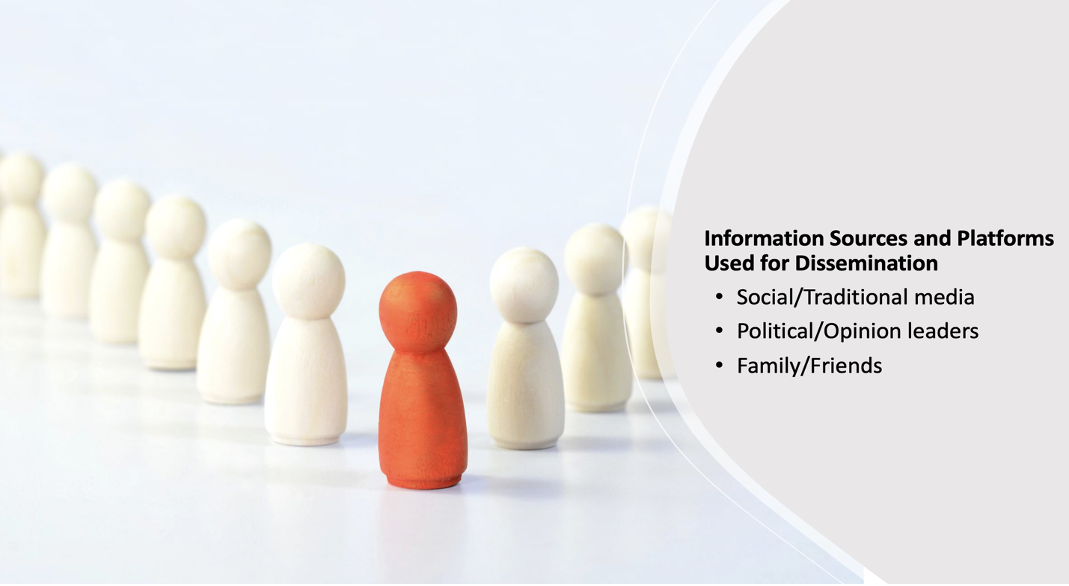
The Interconnected Nature of Misinformation, Disinformation, and Conspiracy Theories
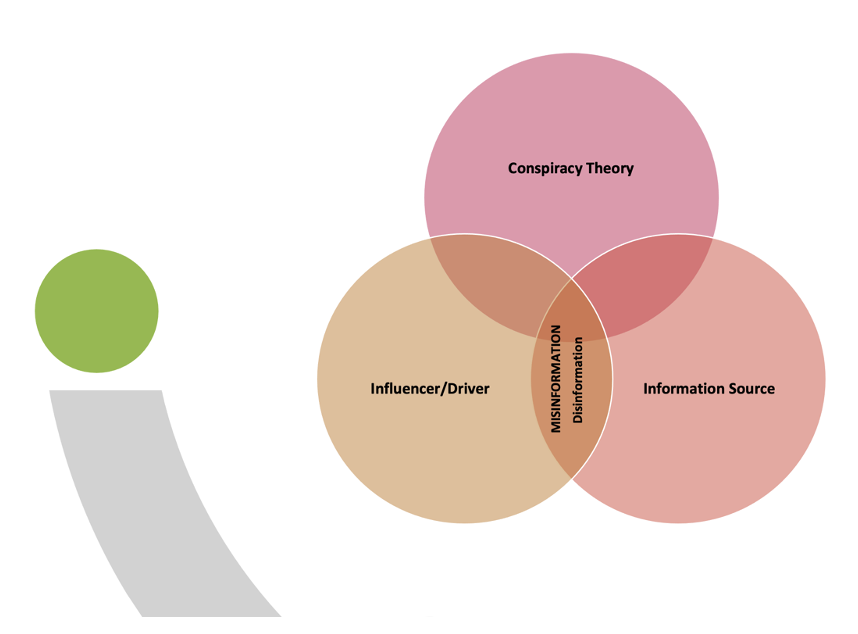
Call for Action: Strengthening Collaboration
It is widely acknowledged that collaboration between information professionals and public health policymakers is indispensable in tackling health MIDI and conspiracy theories. Through the enhancement of digital health literacy and the formulation of impactful policies, these stakeholders can collectively confront the pressing challenges presented by misinformation and disinformation, particularly during significant public health crises and other emergencies.
Cite this article in APA as: Daraz, L., Chang, Bebe S., & Bouseh, S. Deadly fiction versus living facts: Tackling the Covid-19 information virus. (2024, May 21). Information Matters, Vol. 4, Issue 5. https://informationmatters.org/2024/05/deadly-fiction-versus-living-facts-tackling-the-covid-19-information-virus/
Author
-
Dr. Lubna Daraz is a dynamic Assistant Professor in the vibrant School of Library and Information Science, part of the Faculty of Arts and Sciences at the prestigious University of Montreal. She is also a Researcher at the Centre de recherche en santé publique (CReSP). Prior to joining this academic haven, she made impactful strides as an Assistant Professor of Medicine and a Research Fellow at the renowned Mayo Clinic in Rochester, Minnesota, USA. Her academic journey is adorned with a Ph.D. in Health Sciences from McMaster University and a Master’s in Library and Information Sciences from the esteemed University of Toronto, Canada. In the realm of expertise, Dr. Daraz shines as a beacon in the fields of Evidence-based Practice, Knowledge Translation, Digital Health Information-Seeking, Digital Health Literacy, Health Informatics, and Implementation Science. Her passion extends to addressing the needs of Disadvantaged Populations, embodying a commitment to inclusivity and social impact. With an insatiable curiosity and a dedication to pushing the boundaries of knowledge, Dr. Daraz is not just an academic but a trailblazer shaping the future of health information sciences. Join her on a journey of discovery and innovation as she navigates the intersection of technology, health, and knowledge.
View all posts






